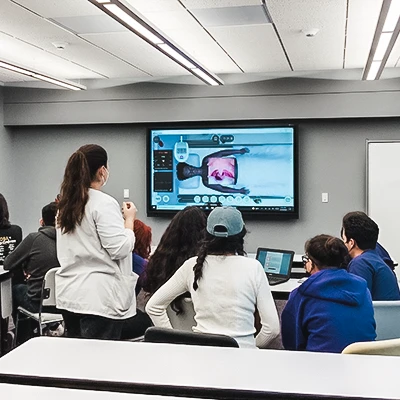The Importance of Briefing in Simulation Training
Simulation-based training has become fundamental in fields like healthcare, aviation, the military, and emergency services, where real-life mistakes can have fatal consequences. Central to the success of any simulation is the briefing—a structured introduction that sets the stage for what’s to come.
While often overshadowed by the simulation itself or the debrief, the briefing is a crucial component that has a direct impact on participant performance, engagement, and learning outcomes.[1,2]
Conducting a well-executed briefing serves to set the tone for the upcoming learning experience, promote psychological safety, and prepare learners both mentally and physically for participation.[1,2,3]

Why the Briefing Matters
1. Establishes Psychological Safety
Before participants can immerse themselves in a scenario, they need to feel safe and supported. A good briefing helps establish psychological safety, encourages open communication, and minimizes fear of judgment.
By creating a psychologically safe environment and pledging respect for the learners, educators reduce anxiety and improve learner confidence and engagement.[3]
2. Clarifies Learning Objectives
The first key component of the briefing is reviewing the session’s goals and objectives. This includes outlining what the learners are expected to achieve. Clearly defined objectives align expectations and help learners engage more purposefully.[1,2]
3. Defines Roles and Rules
Especially in team-based simulations, assigning roles and clarifying the rules of engagement ensures smoother collaboration and more realistic execution. The briefing should introduce each participant’s role, clarify ground rules, and explain how communication should occur during the session.[1,2]
4. Clarifies Expectations and Simulation Limitations
The Briefing should also address logistical details, including the schedule, when and how facilitators may intervene, and the fiction contract. The agreement is that learners will treat the simulation as if it were real, while understanding its limitations.[1,2]
Enhancing the Briefing with Virtual Patients
Virtual Patients, such as Body Interact – Virtual Patient Simulator, provide a unique opportunity to support and reinforce the goals of an effective briefing. Body Interact enhances the briefing process in several ways:
- Scenario Familiarization: Educators can use Body Interact to walk learners through a preview of the case, showing the virtual patient, environment, and interface. This visual and interactive exposure reduces uncertainty and improves learner readiness.
- Role Orientation: With Body Interact, each participant can be guided through their responsibilities within the virtual scenario, whether they are acting as a primary decision-maker, nurse, or student. This ensures clarity and helps reinforce team dynamics.
- Safe Practice Environment: The virtual nature of Body Interact promotes psychological safety by giving learners a risk-free space to engage with clinical scenarios. During the briefing, this assurance can lower anxiety and foster curiosity and participation.
- Consistency Across Learners: Body Interact enables standardized delivery of information and experience during the briefing, ensuring all learners start with the same understanding and expectations, regardless of instructor variability.
The simulation briefing is more than a checklist of instructions; it is a pedagogical practice that sets the stage for meaningful learning. Body Interact further strengthens this process by providing a controlled, interactive, and psychologically safe environment to introduce scenarios, roles, and expectations. As evidenced across high-risk fields, briefings are not optional. They are essential to the success of simulation-based training.[1,2]
References
1. Chan, H., Wong, S., Yau, S., & Chan, S. (2023). Use of prebriefing in simulation-based experience for nursing education: A scoping review. International Journal of Healthcare Simulation. https://doi.org/10.54531/uloa6351
2. Hughes, P. G., & Hughes, K. E. (2023, July 24). Briefing prior to simulation activity. In StatPearls. StatPearls Publishing.
3. Rudolph, J. W., Raemer, D. B., & Simon, R. (2014). Establishing psychological safety in simulation: The role of the presimulation briefing. Simulation in Healthcare, 9(6), 339–349. https://doi.org/10.1097/SIH.0000000000000047









